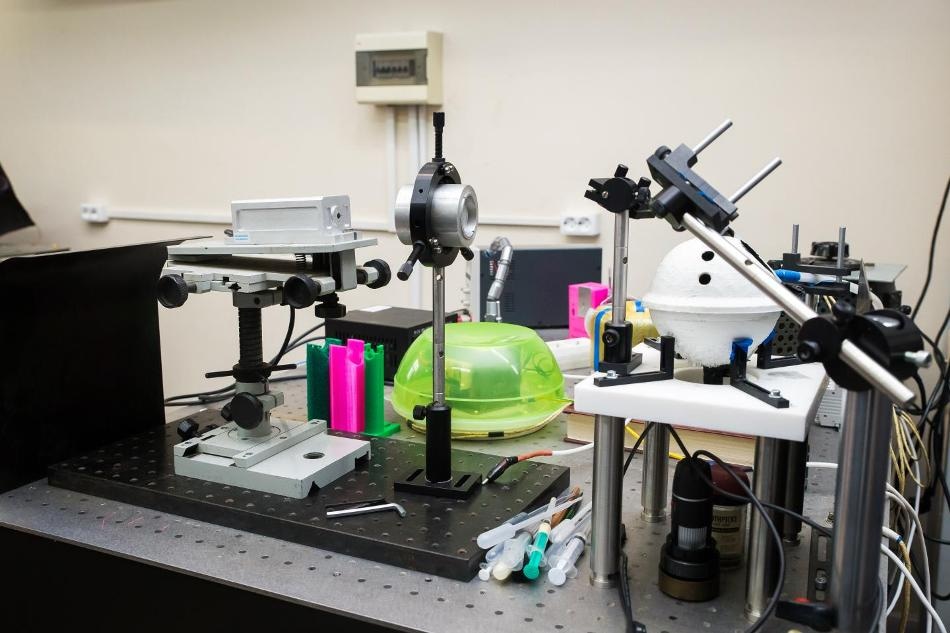Apr 29 2019
A new technique for the analysis of electromagnetic field within ion traps has been devised and used by researchers at ITMO University. They have described the deviations in field within nonlinear radio-frequency traps for the first time.
 Experimental setup for new ion traps examination. (Image credit: ITMO University)
Experimental setup for new ion traps examination. (Image credit: ITMO University)
This enables reconsideration of applications for nonlinear traps, such as ion cooling and analyses into quantum phenomena. The outcomes of the study have been reported in the Journal of Physics B.
Ion traps have the ability to localize and confine individual charged particles within a closed space to carry out subsequent manipulations, for instance, to cool them or move them down. Fundamentally, cooling down an ion trap relates to the reduction of the kinetic energy of the particle, making it still almost completely. Researchers consider that in the years to come, this method might be used to detect quantum phenomena with the naked eye.
Various types of radio-frequency traps exist, differing based on the configuration and frequency of the field within them. Uncharged particles are cooled by using more convenient optical traps. Radio-frequency traps are applied in the case of charged particles since they enable these particles to be cooled to lower temperatures.
Physicists at ITMO University are diligently investigating radio-frequency traps and seeking innovative ways to render them more effective. As part of their new study, they have come up with a new method for a highly accurate analysis of the electromagnetic field within a nonlinear radio-frequency trap.
In contrast to certain simpler linear traps in which a charged particle is located in one spot, it is possible to “catch” particles in nonlinear traps in a number of spots. Models that were developed earlier were appropriate only for simple traps as they could not account for field asymmetry that occurs in nonlinear traps. The model proposed by the researchers of this study is more universal since it accounts for the symmetry breaking and is appropriate for explaining simple as well as complex traps.
Our research, which resulted in the development of a new technique, began with a cup of coffee. As a big coffee drinker, I often use a coffee machine at work. Annoyingly, my cup was always sliding off the tray during the coffee preparation, every time in a different direction, which means that it was not caused by the overall tilt of the machine. After studying the literature on vibromechanics, I came to the conclusion that it’s the so-called nonlinear friction that is to blame. Then I realized that this phenomenon can be found in radio-frequency traps that we study. We applied the method of complete separation of motion, used in vibromechanics, and suddenly found out that this allows to describe previously unexplained symmetry breaking in the traps!
Semyon Rudyi, Nonlinear Optics Laboratory, ITMO University
The researchers have tested their technique on the experimental data acquired from earlier studies. Old radio-frequency trap models were not in a position to describe strange deviations that were observed in nonlinear traps, which restricted the prospects of application of the nonlinear traps. Deviations such as these were completely justified within the scheme of the proposed model. Using the new method, the localization of charged particles for various voltages electrode and positions can be predicted and controlled. This is essential for developing highly efficient radio-frequency traps for different applications.
Even though this work is theoretical, it is closely related to practice. Our laboratory develops new designs of radio-frequency traps and constructs them to consequently localize various charged particles. We also do research into nanocrystals in these traps, since these particles can model quantum effects. Our studies often bring unexpected interesting results and bring us closer to interaction with quantum phenomena.
Tatiana Vovk, Modeling and Design of Nanostructures Laboratory, ITMO University